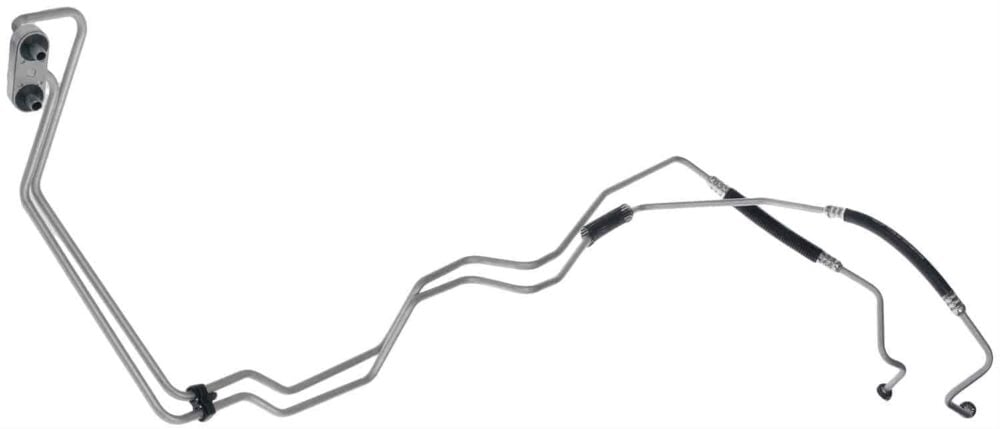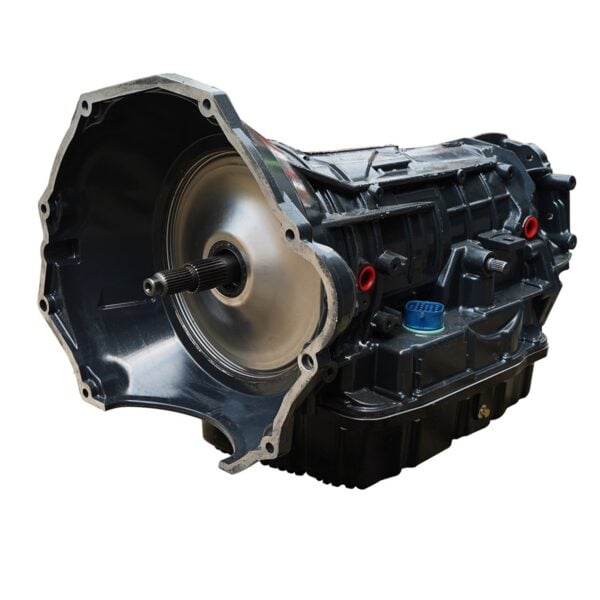Sign up now to join the JEGS email newsletter and be the first to learn about new products, special deals and e-mail only offers!


When it comes to transmissions, you are probably well aware of the two most common choices: manual and automatic. However, there is also a third, sometimes overlooked option, which is the CVT. It is most often used by Japanese car manufacturers, such as Honda and Toyota.
Like an automatic transmission, a CVT operates without driver’s intervention, which is why owners of CVT-equipped vehicles sometimes mistake their transmission for a regular automatic, even though there are major differences between the two. We’ll explore what exactly those differences are in this article and look at which of the two transmissions is more suitable for your driving style.
A traditional transmission, whether manual or automatic, has a set of gears, which the transmission uses to change the gear ratio to match the engine RPM with the car's speed. An automatic transmission does not require any driver’s input to change the gear ratio, which is also the case with a CVT (Continuously Variable Transmission) but that’s where most similarities end.
A CVT transmission does not have any actual gears. Instead, it uses two cone-shaped pulleys that are linked with a metal chain and transmit power from the engine to the driven wheels. Nonetheless, even without the gears found in a traditional transmission, the CVT can provide ideal RPMs because the pulleys have adjustable width that changes based on inputs from the ECU and the currently needed power. Changing the size of the pulley is possible thanks to the cone shape that it has, and since the size can change by as little as a hundredth of an inch, the CVT can essentially achieve an infinite number of gear ratios. This is the reason why it’s called continuously variable.
Given the mechanics of the CVT and its virtually infinite gear ratios, it can provide a much smoother ride, as the transmission never actually shifts. In addition, the continuously changing gear ratio makes cars equipped with CVTs more fuel-efficient, which also means less emissions are emitted. Efficiency is really what CVTs are all about.
On the other side stands the typical automatic transmission. Although less efficient, there are still numerous arguments that can make it a better choice for your needs. One of the first things that comes to mind is reliability. An automatic transmission has been around for much longer than the CVT, which allowed manufacturers to almost perfect the mechanics of it. If you don’t replace your car frequently, a standard automatic might just be a safer bet. Even in case the transmission needs service, most mechanics are familiar with how they work and can repair them. Another aspect is the fast gear changes, which is especially crucial for sports cars. Modern automatic transmissions are able to change gears in less than 0.1 of a second, meaning that the moment you touch the throttle, the car is ready to accelerate with all of its power.

Sign up now to join the JEGS email newsletter and be the first to learn about new products, special deals and e-mail only offers!

Of course, with the many advantages of these transmissions also come some downsides. In terms of the CVT, the major disadvantage is the noise. Under acceleration, an automatic gearbox will never keep the RPMs near the redline where the engine is the loudest, and instead, RPMs will rise and fall as the transmission goes through gears. On the other hand, as a car with a CVT increases speed, it keeps constant RPMs, and when you need to accelerate quickly or go up a hill, the transmission will regularly keep the engine at 5,000 RPM or more. This creates a loud humming sound that is comparable to driving in fourth gear on the highway with a standard transmission. Besides this, CVTs are slightly less reliable because of their relative novelty compared to other types of transmissions. They are also typically more expensive to repair and might require you to find a specialized shop that focuses on CVT transmissions.
An automatic transmission solves the above-mentioned issues of the CVT but comes with other disadvantages. A CVT is supreme in terms of efficiency, and an automatic just can’t match that. They also don’t offer as smooth of a driving experience, and especially when doing some spirited driving, a sudden gear change can throw the car off balance and cause unpredictable loss of grip. Despite this, an automatic transmission is preferred for sports cars, as it gives the driver more control over the car and ensures a faster throttle response.
Knowing how the automatic transmission works is crucial for understanding its differences from the CVT, as well as knowing which system is better for you. In simple terms, an automatic transmission has three main sections: a torque converter, a hydraulic system, and gear sets. The torque converter transfers power from the engine to the driven axle, and the hydraulic system allows the transmission to move between gears. Finally, the gear sets are what actually determine the gear ratio and involve the sun, planet, and ring gears. Planetaries encircle the sun gear, engaging the ring gear. Clutches and bands regulate gear engagement. For first gear, a clutch holds the sun gear steady, propelling the ring gear. Second gear uses another clutch to grip a planet gear, and higher gears utilize distinct clutches and bands to change the gear ratios.
We’ve already described the mechanics of the CVT, which gives us a good idea about how the two differ. What it really comes down to is that a CVT can change gear ratios continuously, while an automatic transmission has pre-defined gears that it can operate with. As discussed above, this all comes with advantages on one side and compromises on the other.
If you don’t like experimenting with new things, an automatic transmission will be perfect for you. The same applies if you like sporty driving and want to have more control over the car. However, if you are a relaxed driver, the efficiency and predictable behavior of the CVT will make the CVT an easy choice over the more traditional option.
With this said, some manufacturers have started to experiment with CVT transmissions that simulate gear changes in order to appeal even to those customers that would otherwise dislike the behavior of a CVT. A transmission programmed this way appears similar in behavior to an automatic gearbox. This feature can be found on, for example, the Honda Civic. Under moderate acceleration, it behaves like a standard CVT, keeping constant RPMs. However, when you want to use the full power, the engine will go up and down through the rev range, thus avoiding the somewhat annoying sound characteristics of a standard CVT under acceleration. It is true that this makes the CVT slightly less efficient, however, it makes for a good compromise between the two options and certainly makes it a transmission worth trying.




